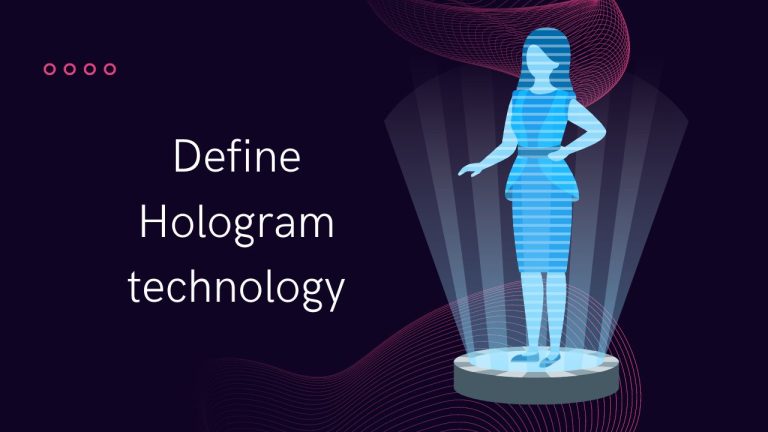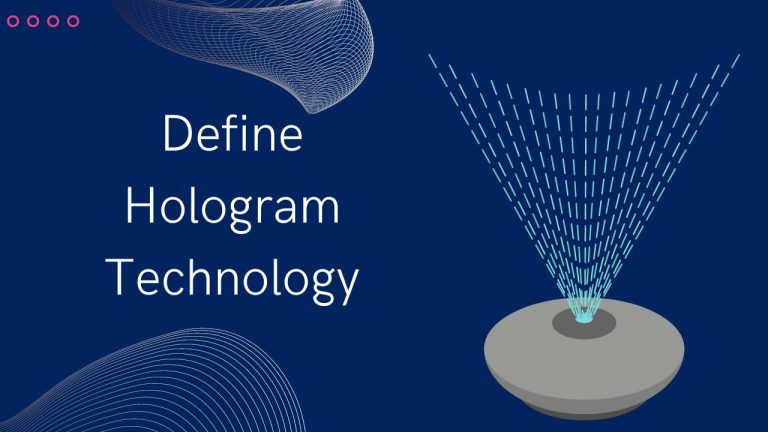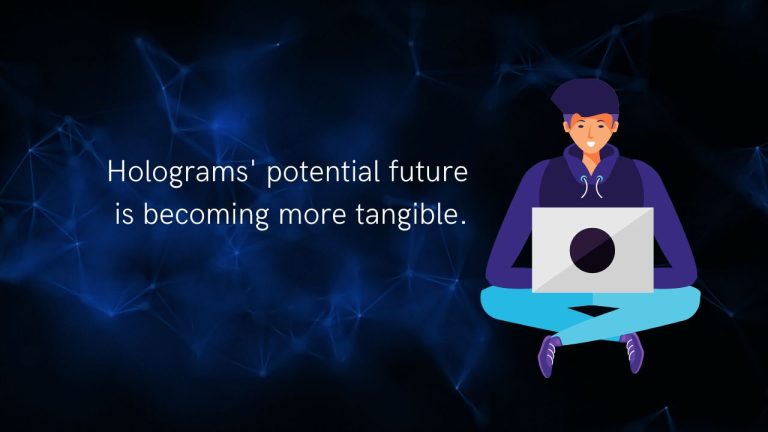Applications for Holograms
Introduction:
The use of virtual holographic technologies facilitates the development of virtual overlays of actual environments. This technology can revolutionize the game thanks to its many solutions. Building simulated environments for real-time training, teaching, and visualization may also be done with this approach. Holographic recordings can be created using a variety of techniques. Yet, the primary source of coherent light is typically the laser. The phase difference between the two light channels produced by the studied object is used to construct the image.
So, any phase difference introduced by the laser during operation would destroy the resolution or drastically reduce the potential depth of field in the final image. Virtual reality (VR) and 3D printing are only two of the technologies that would benefit from real-time 3D holography. This lessens the negative consequences of eye strain and other prolonged VR use while immersing viewers in a more realistic scene. The technique can also be easily applied to screens that alter the phase of light waves. Holography is more specifically the study of creating, then capturing, light patterns brought on by the interaction of two light beams.
While the object beam interacts with the recording medium by passing through or reflecting off the subject of the research, the reference beam is instantaneously imprinted on the recording medium. In contrast to stock photography, which only records a single image, holographic imaging records both the phase and amplitude intensities of the two routes that go to the recording device.
Cyber-physical systems are ubiquitous mobility that use holography to link the virtual and real worlds. A digitally enhanced representation of the real environment is called augmented reality (AR). Hence, a user can access and overlay digital information with the physical world utilizing industrial AR. This system selects things from a warehouse and sends mobile device repair instructions. AR provides workers with consistent data that improves decision-making and work procedures.
The use of 3D holograms for display purposes in the holography method is novel and innovative. The products are presented in a premium, unique, and creative manner while correctly meeting the needs of the relevant target markets. Also, it is advisable to use an acoustic backdrop that is compatible with the 3D hologram and includes both background noise and original sound effects. The fundamentals of holography, its method, its different properties, and possible uses for new industrialization are discussed in this study.
The history of holography
The Greek terms “holos,” which means “whole,” and “gramma,” which means “message,” were combined to create the English word “hologram,” which refers to a whole message or a complete image. In contrast to traditional photography, holograms are three-dimensional images. Several holographic techniques employ light, frequently in the form of lasers, to create different effects. These holograms are created by splitting a laser beam into two separate beams using an angled mirror. Due to the holographic image’s ability to give the spectator depth perception cues, it appears three-dimensional.
It results in rebuilding the entire light field that the item scatters. The observer might circle the object and look at it from various angles, perhaps even peeping around a front-facing object. A two-dimensional snapshot, on the other hand, can only show the scene from the chosen point of view during the recording.
Holograms are actual, virtual, three-dimensional images created by the collision of light beams reflecting actual, physical objects. Computer-generated holograms for augmented reality goggles and real holograms for optical displays are the two ways to make holograms.
Depending on their intended application, holograms can be either clichéd or realistic. The application allows users to create 3D things from scratch or import models from other service providers. Using this unique photographic technology, 3D things are photographed while being laser-captured and then meticulously recreated to match the original object. Holograms may create a precise 3D copy of an object and imitate its features when illuminated by a laser. A hologram at a particular position in space can only be accurately depicted when two light waves are moving simultaneously.
Purposes of the study
As was already established, the term “hologram” can apply to both the image and the encoded content. The majority of its practical applications, nevertheless, have been making exact duplicates of actors and performers who are on stage or in commercials for goods. Holography is the next development in imaging technology after photography and conventional film, and its three-dimensionality offers up entirely new uses, such as product display.
A 3D hologram is a three-dimensional representation of objects and animated scenes that, in Industry 4.0, enables purportedly real objects or animations to float freely in space. The 3D hologram, which can be viewed from all angles unlike a standard film on a regular screen, enables the viewer to move around the hologram and create an astonishingly lifelike-looking image.
Significant holographic technological advances
Several industries will be digitalized and computerized in Industry 4.0, allowing robots to think and perform tasks independently of humans. Implementing a system that can learn automatically and get better with experience without being specifically built is machine learning. With more data and a stronger model, machine learning becomes more accurate. We are only at the beginning of the utility of holography, and as scientists and engineers advance the technology, holograms will play a bigger role in society.
Virtual holographic technology also enables the use of 3D high-resolution advertising in the marketing sector. Many product marketing components could be brought to the user’s attention and marketed immediately.
Limits and foreseeable future
Digital holographic microscopy equipment and holographic screens are too expensive to purchase with initial money. The necessity for specialized digital imaging equipment and objective lenses drives up the cost of this procedure, which is normally expensive. The approach also has a limited range of applications because processing holograms requires more computational power. Large amounts of processing power, memory, and storage are required to compute holographic reconstructions when using holography for 3D imaging techniques.
Conclusion
Holograms are three-dimensional images produced by overlapping light beams that reflect real, observable objects. In a hologram, a picture is created through the use of light diffraction. Although holography technology has been around for a while, its ease of deconstructing, transferring, and recreating 3D images has significantly increased. Holograms and 3D images are now being produced using them in popular culture, which is useful for Industry 4.0. Holograms, as opposed to conventional 3D projections, can be seen with the unaided eye.
The use of this technology in manufacturing advances to boost productivity through talent development, supply chain management, and process and continuous improvement has received a lot of media attention. Holograms maintain the depth, parallax, and other features of the original object. They are great for explaining complex technological concepts and showcasing beautiful objects. Holograms have a substantial benefit in commercial security since they are intricate and difficult to make. Holography may help product designers perceive, communicate, exchange ideas, make decisions, and speed up and improve the physical design process, as we can see now.
FAQS:
What applications do 3D holograms have?
Holography has a variety of established applications. It entails data storage, in-depth image capture, and the usage of holograms as optical elements. We also noticed additional uses, such as precise interferometric measurements on any shape of a three-dimensional item.
What applications might holograms have in the future?
Modern holograms are more sophisticated and are utilized in advertising, space exploration, surgery, and medicine. New options for communication, education, entertainment, and other things are being created through technology. Future societal effects of holograms are quite likely.




